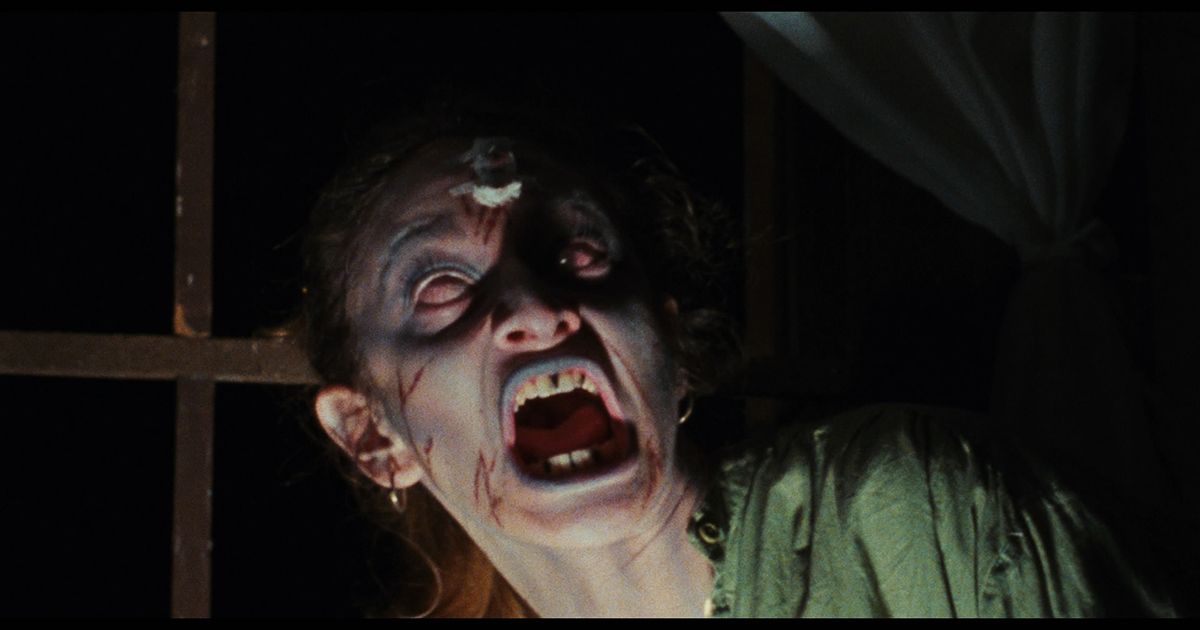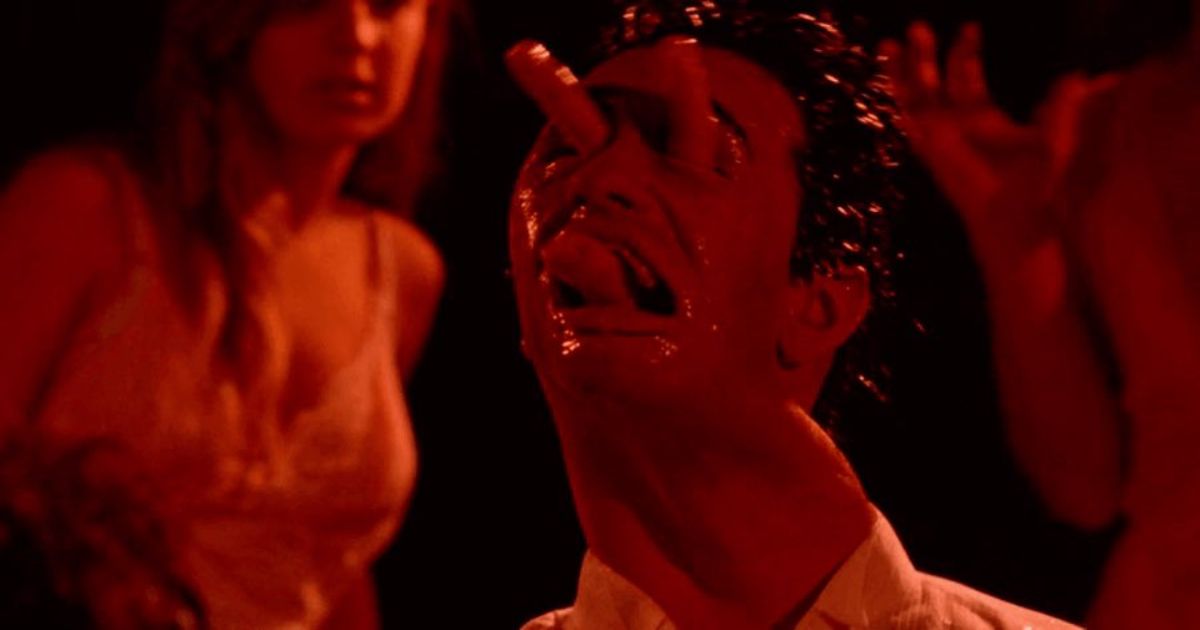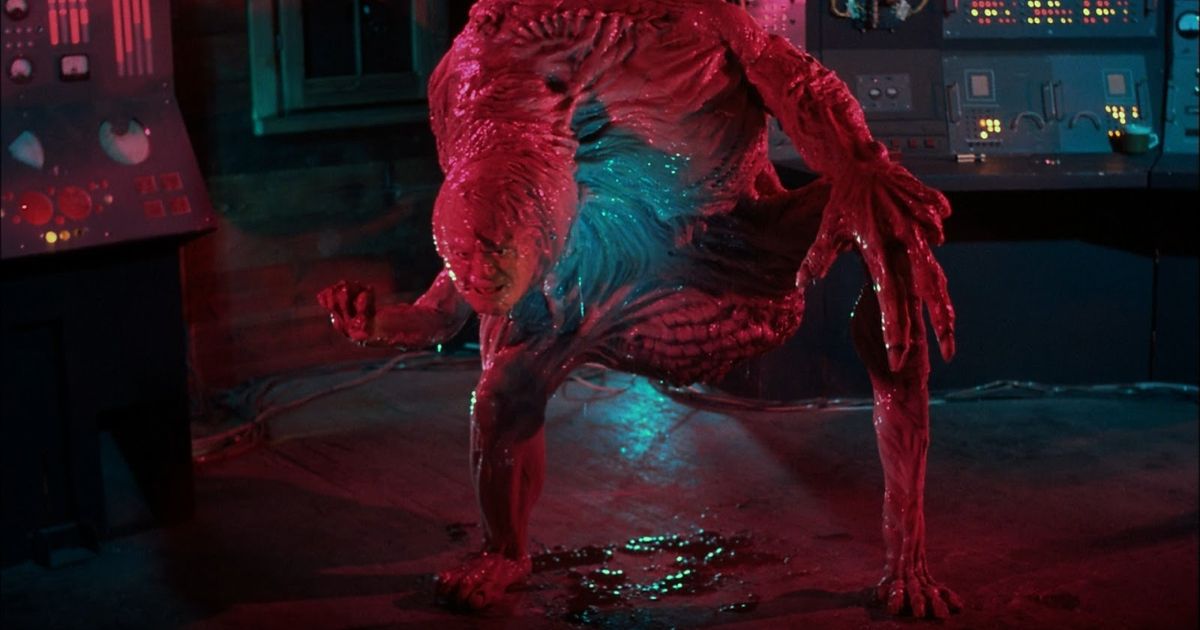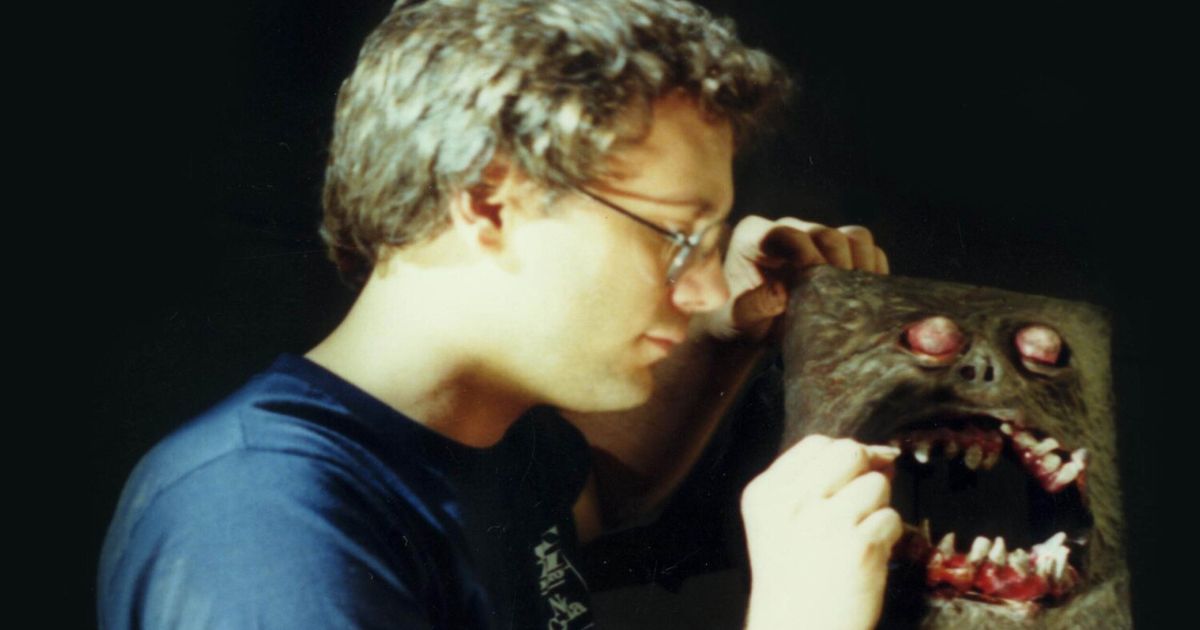Low-budget special effects are a classic and signature part of what is known as "campy" horror. While somewhat difficult to define, camp is best understood as something that is cheesy, excessive, and even silly. American critic Susan Sontag, in her 1964 essay Notes on Camp, describes it as "love of the unnatural: of artifice and exaggeration." There is no genre that loves the unnatural more than horror.
The most iconic movie that defined the genre of campy horror is, of course, The Evil Dead. Released in 1981, The Evil Dead only had a budget of $375,000. Director Sam Raimi and the leading actor Bruce Campbell, who have been friends since childhood, were set on making a horror movie together, even though they had no money and no connections. Both Raimi and Campbell ended up asking pretty much every person they knew in their lives, scraping together just enough donations to end up making one of the most influential horror movies ever. Because of this low budget, they had to get creative.
Raimi brought his college friend Tom Sullivan into the fold for the special effects. Sullivan had a penchant for stop-motion animation and puppets, which was exactly what Raimi needed for his vision. Along with the slapstick style of filming that Raimi added, Sullivan's special effects made The Evil Dead what it is, unique and highly entertaining, and the movie has persisted as one of the greatest horror films to this day. Its unpolished and messy look only adds to its charm, and even with larger budgets for the subsequent sequels, the Evil Dead movies retained their thrown-together look for special effects. Roger Ebert, in his review of Evil Dead 2: Dead by Dawn ,said that "The grubby, low-budget intensity of the film gives it a lovable quality that high-tech movies wouldn't have."
Low-budget horror has since become defined by excessive and relentless gory practical effects, that are both horrific and somehow entertaining - even humorous at times.
But is it just nostalgia, or is there something more to low budget special effects that suits the horror genre so well?
The Appeal of Campy Horror
Campy horror movies are just downright fun. For a time, especially in the '80s and some of the '90s, they practically defined the horror genre itself. Whether it was Freddy Krueger toys marketed towards children, or the decidedly entertaining adventures of Ash from Evil Dead, horror had an element of enjoyment that was almost akin to the kind of terrifying thrill you'd get at a carnival. And that was because of the way horror embraced camp.
Being campy doesn't mean that you are making fun of the genre - it is actually the reverse, a kind of celebration. As writer Christopher Isherwood said about camp, “You can’t camp about something you don’t take seriously. You’re not making fun of it; you’re making fun out of it. You’re expressing what’s basically serious to you in terms of fun and artifice and elegance”.
Modern horror movies have drifted away from this style, favoring hyper-realistic and psychologically dark horror instead - and that works, it is quite scary. But, there's something of the fun in horror that is missing. The pure enjoyment of it, that comes from the simultaneously sincere and silly, overly-exaggerated campy horror that entertains audiences to this day.
Camp horror is something we come back to watch time and again, especially with friends, because it is at the heart of it, so very enjoyable. That doesn't take away from the creepiness or horror, either. Watching an obvious prop writhe as fingers come out of its eyes is still horrifying, even if it is clearly fake - and the fact that it is clearly fake is what allows us to enjoy it so much, while the idea of the horrifying thing happening does not lose its gruesomeness. And this is part of why camp horror may even be the best genre. By embracing its ridiculousness and exaggeration, it allows audiences to step into the highly bizarre and surreal, the grotesque and the horrifying; to stretch the boundaries of what is possible as far as they will go - which creates its own kind of anticipation, as well as anxiety, as we wonder, how far can it go?
Showing the Unnatural Through Exaggeration
The more real something seems, the more we want to justify its reality. The more we want an explanation, or at least logical consistency. With campy horror, we are invited to abandon logic for the sake of fun. To suspend our disbelief, and enjoy that suspense. Low-budget special effects embrace this suspension, taking advantage of our willingness to believe, to fill in the gaps between what we are being asked to see, and what we actually see. The special effects are crude, unrealistic, and even seem to break the rules of what might be considered typical special effects for a movie.
For instance, Tom Sullivan, when working on the special effects for The Evil Dead, took the typical formula for making blood (corn syrup and food coloring) and added coffee to it - just to give it a different and strange look. He was given such creative freedom that the resulting special effects are even more fantastical, bizarre, and unnerving, and that makes them fit into the equally bizarre story they serve all the better.
But there is a fine line between what is campy, and what is bad. The passion that Sullivan had for his work is obvious, which makes his work enjoyable even when it isn't realistic and could be called "bad". It helps that it was all hand-made. But, when the effects are just bad without the obvious effort involved, such as the terrible CGI sharks in Jaws 3D or the painfully rendered CGI werewolf in An American Werewolf in Paris, the only thing left to enjoy is to laugh at the movie, rather than with it.
The enjoyment of low-budget special effects, when they work well and aid the movie, comes from a sincerity and passion that we can feel as we watch, rather than feeling like whoever made what we are seeing didn't care about how it would look or be received.
The Humanity in an Unpolished Look
There is a certain appeal to seeing something done badly. Low-budget horror seems to thrive in a place between not taking itself seriously, but taking its project and work very sincerely. And that is made even more obvious when the way that a prop or special effect is done is so blatant. When we can recognize the fact that what we're looking at was clearly made and isn't real, we have an almost unconscious recognition of an artist and their work being displayed. There is an excitement behind the effort, however amateur - even a kind of impatience, as if the artist is in a hurry to tell you the story, and has thrown together these pieces of it.
The visible effort in prop-making, and in special effects, adds something that we don't always think we want. After all, it is assumed that the best special effects will look the most realistic. But there is almost something boring, or even sometimes unnerving, about a thing that is done too well - almost perfectly. Flaws are appealing. They add a space between the medium and the audience that seems to make the flaws themselves their own art form. Digital effects such as VHS tape imperfections or shaky cameras are even utilized to enhance horror through the very flaws they produce. There is something about seeing shaky, grainy video, or the crackle of sound on an old vinyl record, that has a strong appeal. That appeal is present in low budget horror effects as well.
It isn't just that the technology for most of this low budget horror is old, and that we feel nostalgic when we see it. There is something in the flaws themselves that adds a humanity to what we are seeing - the touch of a human mind, and a flawed hand, upon the work. Humans are, if nothing else, flawed. And we are drawn to explorations of that, sometimes more than we are drawn to a thing done perfectly well. A visual effect that is flawed is not any less authentic for it, and perhaps even more so.
As Sontag said in her essay mentioned above, "Things are campy, not when they become old, but when we become less involved in them, and can enjoy instead of be frustrated by the failure of the attempt." Campy horror isn't trying to make you believe it's real, and because of that, we can enjoy the messy and thrown-together look that fails at reality, but succeeds in imagination and, more than anything, fun.
When comparing the original Jaws movie to Jurassic Park, we get an obvious example of this. The flaws Spielberg came across when trying to get the animatronic shark to work hindered the film, and so there are very few scenes where the shark is visible. When it is visible, it is painfully inaccurate and clearly not real. Yet, there is something more unsettling, even terrifying, in the vague glimpses of a fin, or the feeling of almost seeing it, than the very visible, and indeed very impressive, dinosaurs that dominate the screen of Jurassic Park. Even the robotic movements of the shark as it maddeningly moves its jaws trying to eat Quint is somehow more disturbing than the realistic Velociraptors.
Low-budget special effects are an essential part of why campy horror is so fun and so appealing. Horror fans will continue to re-watch these wildly engaging and enjoyable movies for years to come, and we can only hope that horror embraces its roots and makes more of such films in the future.




